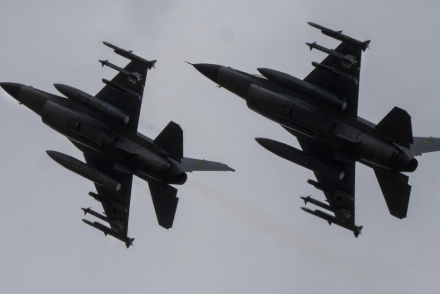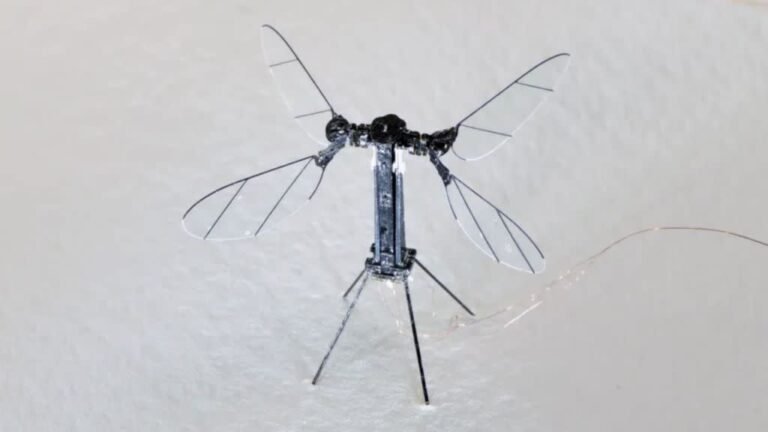
In a harrowing escalation of the war, Russian forces launched their most massive aerial attack since 2022, deploying a staggering 537 aerial weapons—including 477 drones and 60 missiles—against Ukraine in the early hours of June 29, 2025. Amidst the chaos, the Ukrainian Air Force suffered a deeply felt loss: Lieutenant Colonel Maksym Ustimenko, a seasoned F‑16 pilot, heroically intercepted seven hostile targets before his aircraft was struck and crashed—without giving him enough time to eject
Ustimenko, aged 31, was one of Ukraine’s most experienced F‑16 pilots, flying a Western‑supplied craft at the forefront of the country’s air defense efforts. Despite overwhelming odds, he downed seven incoming drones or missiles. In a final act of courage, he steered his damaged jet away from populated areas, sacrificing his own life to protect civilians below. “He died like a hero… Eternal flight, brother,” announced the Ukrainian Air Force, honoring his selflessness.
Ukraine’s air defenses performed strongly under relentless assault, successfully intercepting approximately 475–486 of the weapons launched by Russia, including 249 shot down and 226 neutralized electronically. Yet Russian projectiles nonetheless inflicted damage: fires broke out in Lviv and Cherkasy, power grids were hit, and civilian areas across Kyiv, Kherson, Kharkiv, Mykolaiv, Zaporizhzhia, Cherkasy, and Poltava sustained casualties and destruction.
President Volodymyr Zelensky issued a heartfelt tribute: “Tragically, while repelling the attack, our F‑16 pilot, Maksym Ustimenko, died. Today, he destroyed seven aerial targets.” He urged swift delivery of advanced air defense such as Patriot systems, reiterating, “Moscow will not stop as long as it has the capability to launch massive strikes” . Zelensky further emphasized the resilience and bravery of Ukrainian aircrews and called on Western allies to bolster Ukraine’s defenses with political will .
Amid this escalation, Poland and NATO scrambled fighter jets and activated air defense systems in border regions—stressing that the assault was so intense it warranted NATO readiness.
Monday night’s bombardment was the most sustained since the onset of Russia’s full-scale invasion. Ukraine lost its third F‑16 jet in combat since acquiring them in mid‑2024. While two earlier losses resulted in surviving pilots, Ustimenko’s death marks a painful human toll and underscores the gradual depletion of Ukraine’s F‑16 program.
Analysts note that Russia appears intent on stretching Ukrainian air defenses thin using swarms of drones and missiles, seeking to overwhelm radars and interceptors. Ukraine’s reliance on American-made jets and ground defense systems has become increasingly vital, yet their limited numbers leave them exposed .
The assault reverberated far beyond military targets. In Cherkasy and Lviv, drone strikes ignited industrial fires and caused widespread power outages. Cherkasy alone saw several injured—including a child—and one civilian fatality; across Kherson, Kharkiv, Dnipropetrovsk, and Zaporizhzhia regions, at least ten more perished and dozens were wounded.
For many residents, the night became a desperate scramble as sirens blared and families sought shelter in metros and basements, praying for dawn.
With Ustimenko’s sacrifice emblazoned in memory, Ukraine’s leadership continues to press for expedited delivery of Patriot systems and additional Western F‑16s . Simultaneously, Russian forces show no signs of de-escalating; instead, they are risking broader regional consequences by prompting NATO readiness along their shared border.
This devastating episode—of overwhelming force, courageous defense, and grievous loss—highlights the fierce intensity of a war that has entered a new phase of aerial warfare. The skies over Ukraine have become a pivotal battleground, and as long-range drones and missiles escalate, so too does the reliance on skilled pilots like Ustimenko, whose legacy will endure as a symbol of Ukraine’s fight to protect its people Keep Reading questiqa.com for more news.




